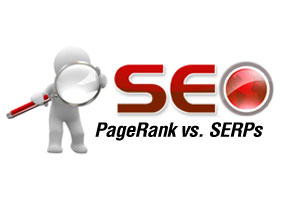Sit down and pull up a chair. This blog post is the first installment of an ongoing series on SEO and how to obtain the much-valued top search engine positions.
As part of an online marketing strategy, a primary objective for business owners and competitive social media marketers is to get top search engine results (SERPs). More recently however, the focus has shifted to PageRank as well. So what is PageRank anyway and how does it relate to the much-talked-about holy grail known as SERPs?
What is PageRank?
PageRank, according to Wikipedia:
“is a link analysis algorithm, named after Larry Page[1] and used by the Google Internet search engine, that assigns a numerical weighting to each element of a hyperlinked set of documents, such as the World Wide Web, with the purpose of “measuring” its relative importance within the set.”
Page’s partner in the project, Sergey Brin, had the idea that information on the web could be ordered in a hierarchy by “link popularity”. In layman’s terms, a page is ranked higher as there are more links to it (which is what off-page SEO is). The Google system ranks web pages on a site on a scale from 1-10.
Main factors that affect PageRank:
- Number of backlinks (external links pointing the page)
- How long the page has existed
- Number of internal links (links on the same page that scroll the page up or down to the desired location)
- Well organized site structure
- Quick page load time
- The quality of the website
- SERPs
So that’s all well and good you say, but what’s the skinny on SERPs and how does it relate to PageRank?
What are SERPs? – Search Engine Results Positions
This term SERPs refers to where you are in Google’s search results for a given keyword or keyphrase (which is what on-page SEO is) . For example, you’ve written a webpage about “pomade”. When someone types “pomade” into the Google search box, it would be ideal for your page to be displayed in the top 10 search results for that keyword.
Main factors that affect SERPs:
- Optimized Key Words/Phrases (Tip: Use keywords and internal links at the beginning of content)
- Title tags
- Page URL (redisigning a site can temporarily affect your position)
- Meta Description (Page Description/Summary)
- Anchor text
- Tags
- Page Length
- PageRank
The Bottom Line?
So we’ve learned that both PageRank and SERPs affect each other interchangeably. High PageRank is based mostly on backlinks (off-page SEO) while SERPs are mostly affected by keywords (on-page SEO). So which one is more important and what are the best ways to optimize your page and get backlinks? Stay tuned for the next article from Scott Baldino Design and we will delve into the wonderful world of PageRank and backlinks. We will introduce a new term as well…Social Bookmarking!
Read More!
For a good related article on SERPs read Hubpages.com article at:
http://susana-s.hubpages.com/hub/increase-page-rank-google-search-pagerank

